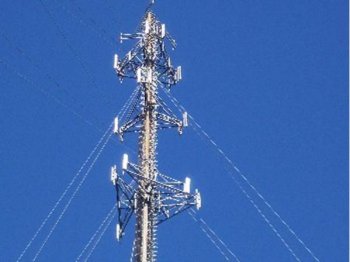
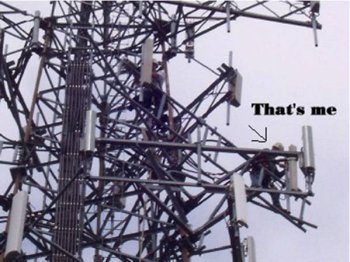
*Cell Phone Site: 10 Cent Tour*
Cell sites are located on towers, water towers, roof tops, hidden in church steeples and several other places. They are actually a rather simple operation. Cell phones are nothing more than full duplex radios which means they transmit and receive at the same time, which allows them to work like a normal land line telephone.
Let’s start with the best part.
Antennas!


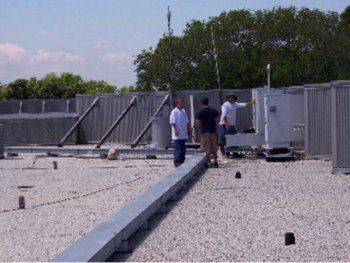
4 sites on this tower---------------------------150’ up----------------------------------------------On a Hilton
Each level of antennas is a separate carrier. Verizon, Alltel, AT&T, T-Mobile, US Cellular or whoever.Cell sites require maintenance to repair broken antennas and connectors and anything else that goes wrong. Sometimes when a site is swept (lines and antennas tested for efficiency) they fail and need repairs.
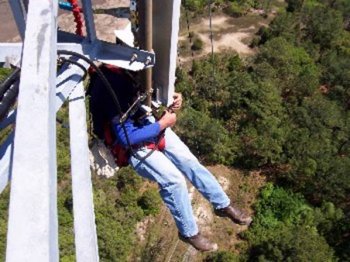
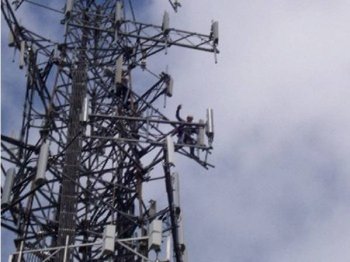
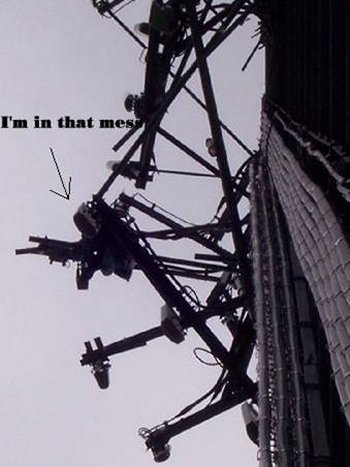
Hanging 250’ above the ground---------------------------HEY RUBIES!!!----------------------------I’m in there somewhere
There are different brands and styles of antennas out there, but they all essentially work the same. When in operation they are set up in to 3 sectors. Alfa, Beta and Gamma. If you look at a site, you’ll notice that there are 1 or 2 antennas pointing in 3 different directions. Sometimes there’ll be 3-4 antennas per sector. Each direction is a separate sector.
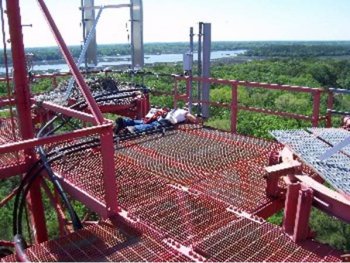
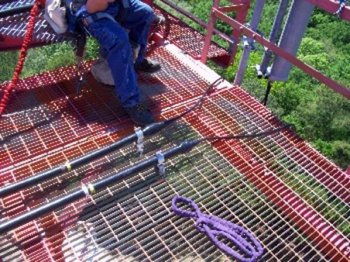
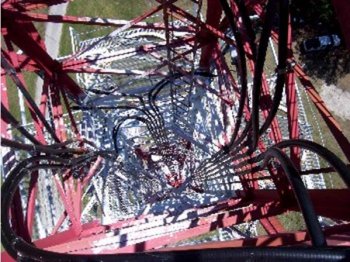
When we install the antennas we have to make sure that they are level. Then an engineer does his super complicated algebraic calculations and tells us exactly what direction they have to be facing and how many degrees of down tilt is needed. For high mounted antennas, they are tilted down slightly so that the signals reach the ground. The round one pictured above can be down tilted electrically from the ground. The two big ones shown need to be done on the tower.
These antennas have a 65 degree beam width.
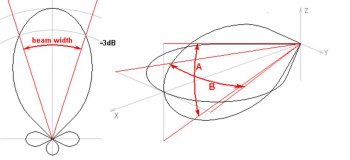
http://www.hdtvprimer.com
Transmission lineTypically the lines will be 1 5/8” or 2 ¼” diameter. Because of the frequencies that cellular phones use the larger low loss line is necessary to make those 200 and 300 foot runs. They terminate in to ½” low loss line which connect to the antenna and also to the equipment on the ground.
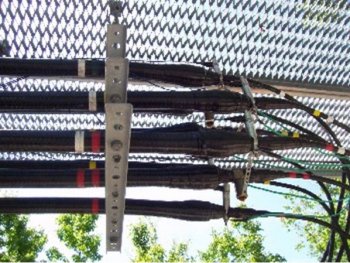
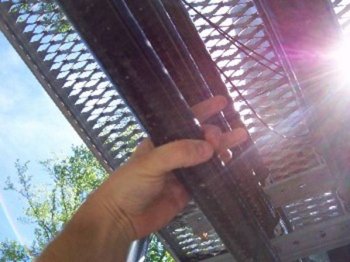
Main line connected to jumpers-----------------------------1 5/8”
Unfortunately I wasn’t able to get any pictures of the brains behind the operation. It is housed in the cabinet pictured below.
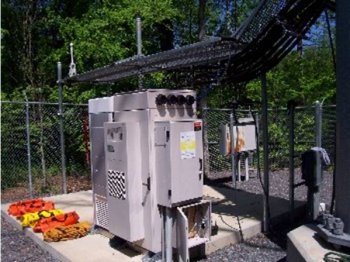
Cellular sites can be controlled remotely. The site can be shut down completely from a location 100 miles or further away at any time.
An engineer can also control a site while sitting in a vehicle.
Cellular sites also utilize the GPS system. If the GPS system is off line, guess what else won’t work.
Some sites do not have back up power.
Jaden
www.alpharubicon.com
All materials at this site not otherwise credited are Copyright © 1996 - 2008 Trip Williams. All rights reserved. May be reproduced for personal use only. Use of any material contained herein is subject to stated terms or written permission.